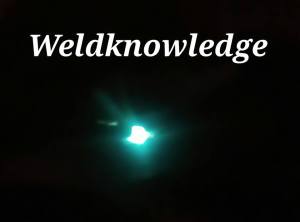Austenitic stainless steels containing more than about 0.1 wt% C are often susceptible to intergranular corrosion in the HAZ of any welds. The phenomenon is known as sensitization, which is alloy is sensitive to corrosive attack, or weld decay, for the way the sensitized region in the HAZ(heat affected zone) is eaten away by corrosion.
Sensitization is caused by the precipitation of M23C6, Cr,Fe-carbides preferentially along grain boundaries ,thereby depleting the Cr in solution surrounding these carbides and in grain boundaries to below the level required to provide corrosion resistance (about 14 wt%). The Cr-depleted region along the grain boundaries becomes anodic compared to the bulk of the grains, which leads to greater susceptibility to corrosive attack. The rate of carbide formation is most rapid in the range of temperature between 600 and 850°C (about 1100 and 1550”F), known as the sensitization range. Sensitization is more severe when
(1) the austenitic stainless contains higher amounts of carbon,
(2) weld heat input is high,
(3) the alloy is deformed (cold-worked) prior to welding, and
(4) there are no alloying additions with greater affinity for C than Cr.
Sensitization occurs only in a narrow band or temperature range because at cooling rates above a certain level, precipitation cannot occur because the time available for diffusion in the sensitization range is too short. Also, if the peak temperature of a weld thermal cycle is too low, precipitation cannot occur because nucleation does not occur.
When the mechanism responsible for sensitization and weld decay is known, there are three ways of avoiding the problem.
First, a small amount of an element having greater affinity for C than Cr can be added, examples adding Ti to type 304 to produce type 321, and Nb to type 304 to produce type 347. By forming Ti-carbides or Nb-carbides preferentially to Cr, Fe-carbides, Cr depletion is prevented and the alloy is said to be stabilized.
Second, the carbon content can be reduced to decrease the amount of Cr, Fe-carbide that can form, and thereby the amount of Cr that can be removed from the matrix. This approach is used in so-called low-carbon or L grades, such as type 304L and type 316L, both having C below 0.035 wt%. To offset the loss of strength caused by reducing the C content, small amounts (0.01 to 0.03 wt%) of nitrogen (N) can be added, N being a interstitial solid-solution strengthener, as well as austenite stabilizer, like C. Grades with intentionally added N are designated, by an N postscript, such as type 304LN.
Third and last, once sensitization has occurred following welding, the weldment can be postweld heat-treated to redissolve the Cr, Fe-carbides in a solutionizing process. This requires heating to 1000- 1100°C (1800-2000″F) for 1 h per inch of thickness, followed by rapid quenching to retain the Cr in solution. This last approach obviously has limited practicality due to problems from distortion of large and/or complex weldments exposed to such high temperatures and such rapid quenches.
Keep reading, happy welding
Thank you,
KP Bhatt

the c % is not above 0.1% ..it is around 0.08%….and also what happens to micro(austenite) when heated to 1000-1100??
LikeLiked by 1 person